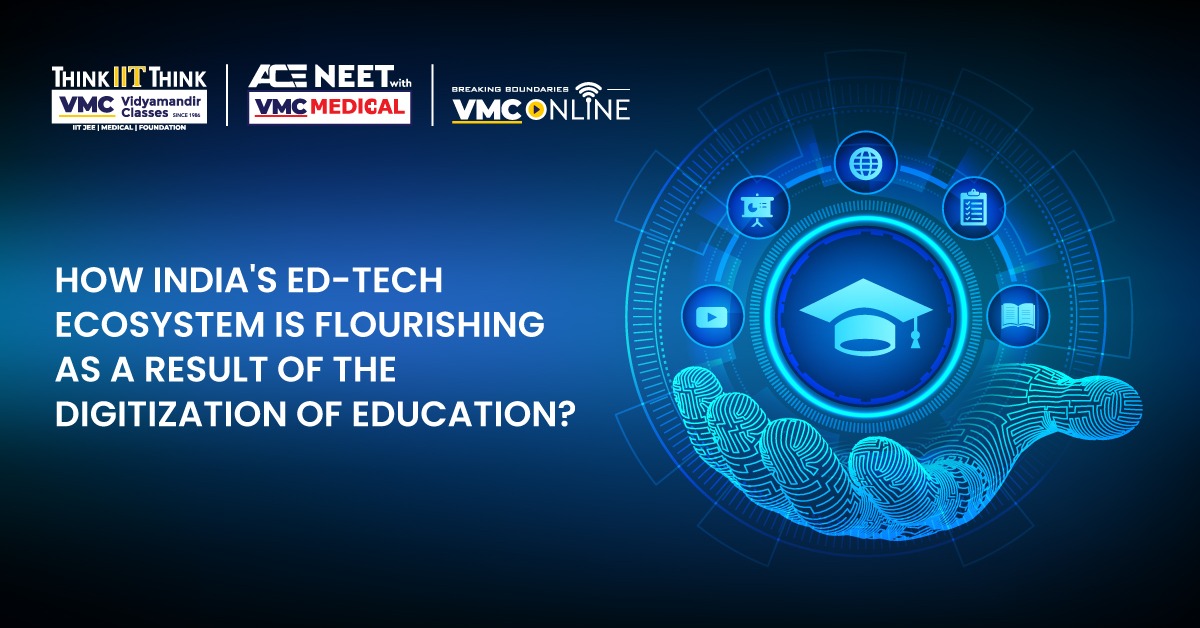How India’s ed-tech ecosystem is flourishing as a result of the digitization of education?
 Posted On
Posted On
365 total views, 1 views today
Education in India has come a long way from the gurukuls of the past, where students congregated outside to hear their guru’s teachings. A record number of Indian students are now learning at home or at school using educational technologies (EdTech). The covid-19 pandemic has sped up the implementation of eLearning in primary, secondary, and postsecondary education.
The constantly expanding student population in India is making EdTech a mainstream component of education.
Learning has become more individualized because to its content-rich curriculum, adaptive learning, quick doubt clearing, and user-friendly Interface. Let’s now examine how the development of the Indian ed-tech ecosystem is being fueled by the digitization of education.
- In the world of technology, the terms virtual reality and augmented reality are already popular. Their introduction to e-learning has had a significant impact on how well it is provided to pupils and how it evaluates their performance. Students using mobile e-learning platforms with VR can interact with their course material in real time. This maintains their motivation levels up and keeps them engaged.
- Today’s educational technology providers provide a wide range of features and applications for users of all ages. Ed-tech platforms have made every effort to provide consumers the best-in-class products and services along with user-friendly applications, from chatbots that can answer questions to tutoring for competitive exams like the JEE, NEET, etc., to facilitating learning for K–12 students.
- Government’s Digital Initiatives is making education accessible to anyone, anywhere. The encouragement and provisions provided by the government through programmes like the SWAYAM (a government-sponsored initiative that aims to uphold the three guiding principles of Indian education policy—access, equity, and excellence), Diksha, e-pathshala, etc. to encourage educational institutions, even in rural towns, to switch to online methods of teaching have helped ensure continuity in academic sessions.
- Engaging student and teacher more effectively in Virtual Classrooms. Students from a range of socioeconomic backgrounds and social levels have been able to attend high-quality education as a result of these platforms’ affordability, accessibility, and flexibility. By incorporating technological interventions like animations or games into existing classes, teachers can make the curriculum more interesting for their pupils. Virtual classrooms can boost interaction by allowing each student to solve problems independently on various devices.
- Adopting artificial intelligence (AI) also has significant educational advantages, including learning that is tailored to the requirements of each student, allowing them to regulate the pace and iterations to improve the subject’s competence. Everything can be made simple by edtech platforms driven by AI search engines. From the beginning, learners would likely be required to complete a questionnaire. This will make it easier for the AI-powered platform to understand the learner’s potential, interests, employment alternatives, budget, and location. With the help of simulation and augmented reality tools, AI is making significant progress in the academic sector by transforming the conventional techniques of knowledge transfer into a comprehensive system of learning.
The Way Forward
Given that technology may break down geographical barriers, edtech has the potential to bridge the learning gap.
The recently announced National Education Policy 2020 (NEP) will have a favorable impact on the ed-tech ecosystem of the nation. The fundamental tenets of the NEP 2020 are accessibility, equity, quality, affordability, and accountability.
By incorporating fresh features like online tests, coding, multilingualism, digital libraries, and virtual labs, among others, it seeks to change the conventional Indian educational system. The policy will benefit K–12 students’ education and the Ed-Tech industry at the same time.
Although it is unlikely that ed-tech platforms would ever completely replace traditional classroom-based education in the near future, it is certain that these platforms will improve India’s ed-tech sector’s standing on a global level.
Without a question, the market for online learning has benefited greatly from education’s digitization. Online learning is becoming more popular, and in the near future, India’s ed-tech ecosystem will expand significantly and prosper.



